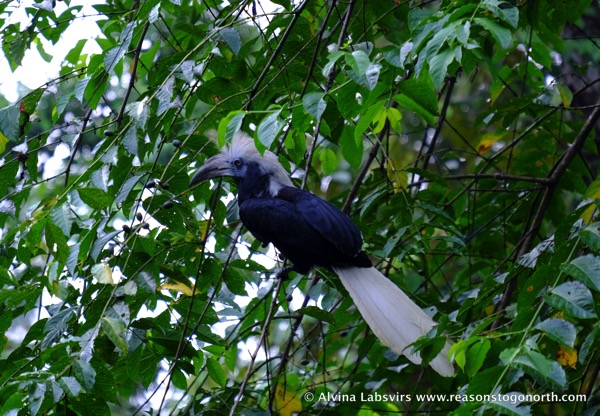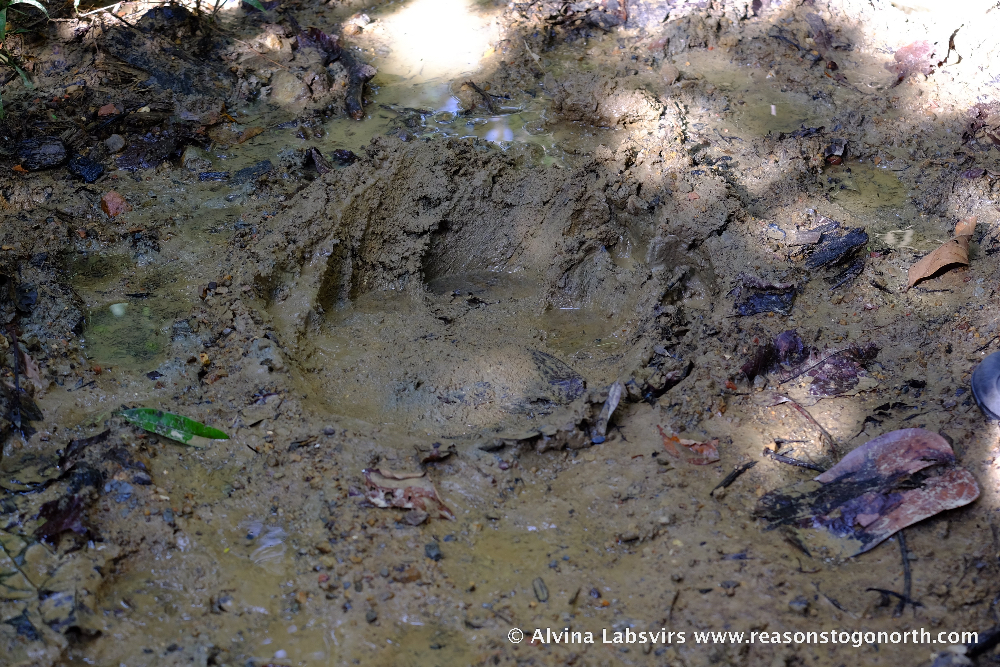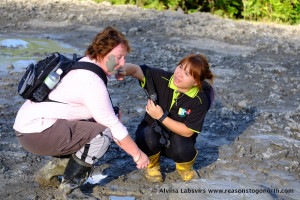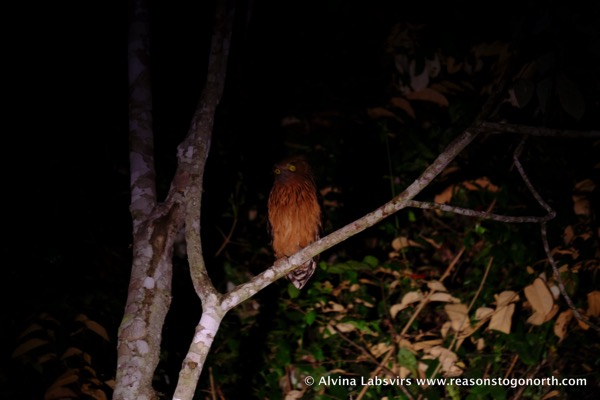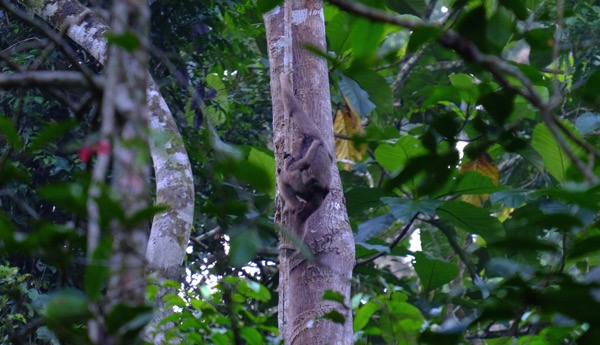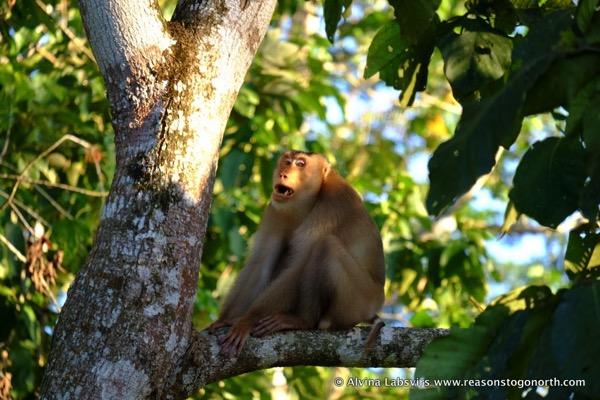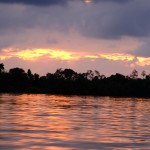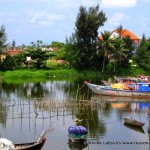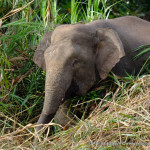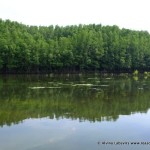Tabin Wildlife
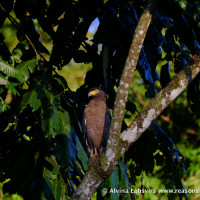
Tabin Wildlife Reserve is the largest protected wildlife area in Sabah. Still resident are Pygmy Elephant, Pygmy Rhinoceros and Orang-utan, to name but three.
The road from Lahad Datu winds through vast plantations of Palm trees and it is hard to imagine there is any natural forest left. Even the tourist lodge perches on the edge. Plantation and forest separated by little more than a cart track. Palm trees protected by an electric fence, the forest area – by nothing.
We slept in a little triangular hut or lodge. A purpose build visitors’ centre. Just in the jungle, but amazingly in the path of gibbons, macaque and langur. A few humans wandering around seemed to do little to upset the myriad of birds.
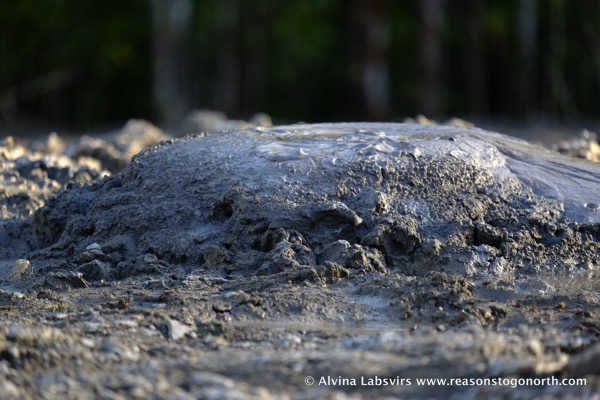
Bubbling mud
On arrival we were whisked away for jungle drive and a brief walk up to a very quiet, almost dormant, mud volcano. We literally followed in the footsteps of an elephant, but he was no where to be seen.
All that remained were rather large leg holes sunk to a wallowing patch. Footprints of pigs and deer abounded, but they too had made themselves scarce.
For us, well the guides amused themselves by persuading us to plaster our faces with nature’s mask.
After a brief afternoon respite and early dinner we were out again on a night drive. Powerful lights catch sleeping birds and flicker across nocturnal predators. The highlight, a beautiful leopard cat caught in the beam. And did we have our cameras? Lesson learned.

Gibbons chorus the dawn. Calling out to their family group, gathering food in the cool morning air. Captivating to watch, a family of five fed and jumped high in the canopy above us, only metres from the forest centre. Time just disappeared. Eventually aching necks and backs moved us on.
Despite bringing the sterile plantations depressingly close, the track proved to be a good viewing point into trees. Once inside it is difficult to see much more than a few metres ahead.
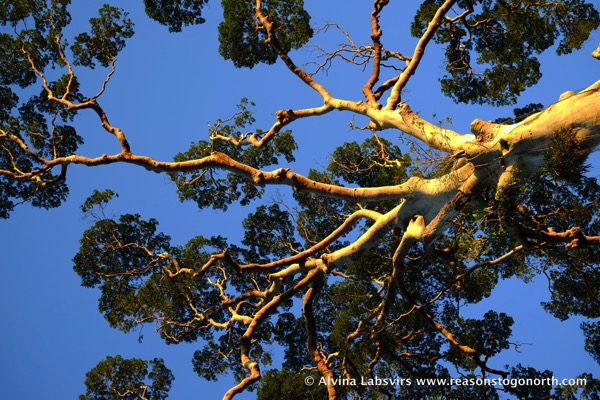
The road spliced through the beauty, hight and spread of the trees, making a better display. At night the cats cross the road to hunt on rodents in the plantations, and our final evening drive, just a few hundred meters away from the lodge there was an orang-utan sat high in a tree. His bright ginger coast set perfectly against the brilliant evening sky.
We watched him for over an hour. A family of Macaque monkeys dashing round him around and occasionally playing chicken in his tree.
That dividing track a reminder of how fragile the forest is, how easy it is for poachers to walk in, how hard for animals to survive.
A book given to us on the Tabin reserve states the main culprit of deforestation to be logging in the 1960s and ‘80s, my generation has a lot to answer for; that oil palm plantations only used already degraded forest area, forests of no use to wildlife. The book is sponsored by the palm oil industry.
With pressure for worldwide NGOs, public and governments there is now a move to deliver palm oil through traceable, sustainable markets and link the remaining jungle areas by wildlife corridors.
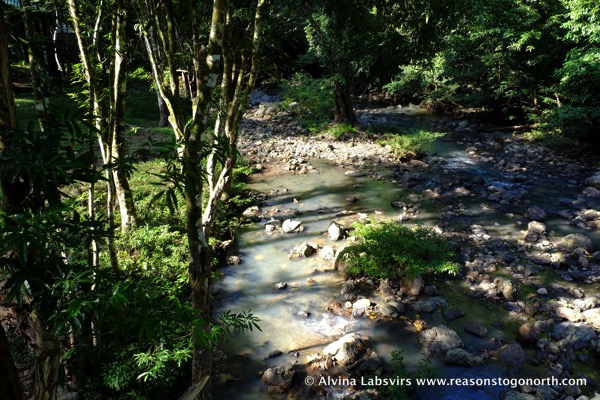
Eco tourism is at least one way we can support these projects.
Our trip organised by Sticky Rice. More information on the lodge and reserve here

